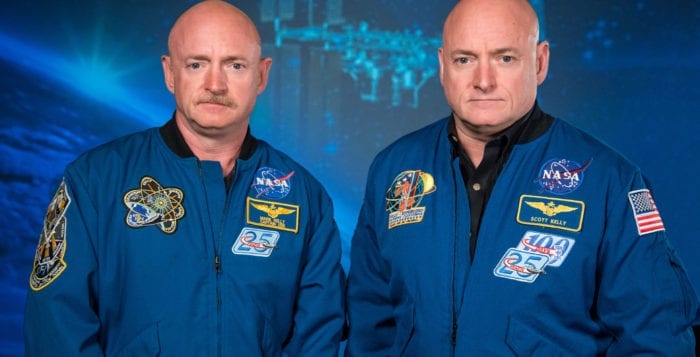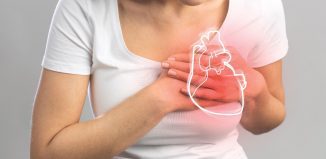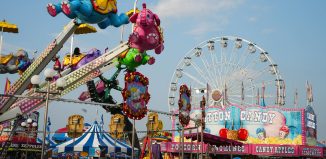Astronaut Kelly’s genes still offering clues about space
By Daniel Dunaief
Dear readers,
Each week, in the Power of Three, Times Beacon Record News Media highlights the efforts of dedicated scientists at Stony Brook University, Cold Spring Harbor Lab and Brookhaven National Lab. This week, we will feature astronaut Scott Kelly, who set an American record for consecutive days in space.
Kelly not only conducted research on flowers and performed space walks while orbiting the Earth, he also became his own living laboratory, taking blood samples to compare to his twin brother Mark. Some day, the pioneering studies from the twins may turn the dream of a trip to Mars and beyond into a reality.
He had a spectacular view for close to a year, watching 16 sunrises and sunsets each day aboard the International Space Station. He even pretended to catch a pass thrown by television host Stephen Colbert from over 249 miles away.
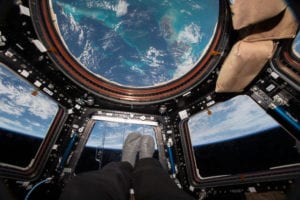
Astronaut Scott Kelly set an American record for consecutive days in space, floating from one part of the multinational station to another for 340 days. During that journey, in which Kelly traveled over 143 million miles with cosmonaut Mikhail Kornienko, the New Jersey native conducted numerous experiments, including on himself. NASA plans to use the information gained from Kelly’s mission to design future extended trips into space, including any future journey to Mars.
Kelly, who returned to Earth in March of 2016, recently published a book titled “Endurance: A Year in Space, a Lifetime of Discovery” (Knopf), in which he shared a long journey from underachieving high school student to celebrated astronaut.
“There are things about the experience that are absolutely amazing,” he said, “but, then, at the same time, the things that make everything amazing also make other things more difficult.” For starters, moving from a Soyuz rocket to the space station isn’t as simple as stepping out of a car and opening another door. When the rocket attaches to the station, it can take hours to equalize the pressure. In a film or documentary of life in space, “You can’t show 11 hours of docking or six hours of preparation to go out on a space walk,” Kelly said.
Once aboard, the astronaut, who had lived on the space station on an earlier six-month mission, said he had to adapt to the logistics of meals in space. Gravity doesn’t hold the astronauts on a chair or their food on a plate. For close to a year, he couldn’t relax his body while eating, which meant that he felt like he was standing and balancing during meals.
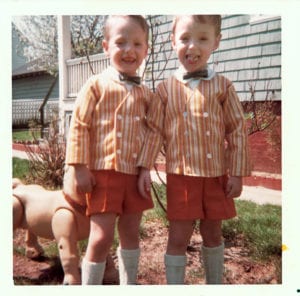
Kelly said the transition from life on Earth to the station, and then back again, requires adjustments. One of the most significant scientific efforts he was a part of originated from a conversation Kelly had with a NASA scientist, asking him what he should say if a reporter asked if NASA was comparing the changes in his body to those of his identical twin brother Mark. The NASA scientist then asked if he and his brother, who is a retired astronaut, would consider participating in such an effort. Thus, the NASA Twins Study was born.
Before his mission, Kelly got several small tattoos on his body, to make sure he was drawing blood from the same place each time. Scientists have spent over a year examining changes in his genes. While more results will be published next year, the work so far shows an uptick in the methylation of Scott’s DNA. That means he potentially had more signals that can turn on or off genes.
Additionally, Scott’s telomeres, which protect the ends of DNA strands, were longer during the same period than those of his Earth-bound twin. Also, Scott returned from space closer to two inches taller than his brother because the discs in Scott’s spinal column weren’t compressed by gravity. That difference didn’t last long, however, as his spine returned to normal after he came back to Earth.
While life aboard the space station included movies like “50 Shades of Grey” in Russian and books like “The Right Stuff” by Thomas Wolfe, which Kelly said inspired him to become an astronaut, it also involved unusual environmental challenges.
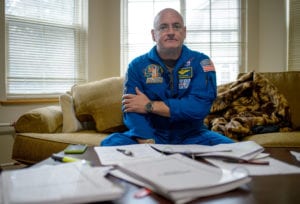
As part of his training, Kelly needed to recognize any of the symptoms of carbon dioxide buildup in his system. His girlfriend Amiko Kauderer provided some necessary observations during one particular conversation. Within seconds of speaking with him, Kauderer told him to stop talking to her and check the carbon dioxide levels. She quickly had diagnosed that the carbon dioxide levels, while not dangerously high, were above Kelly’s comfort level.
Kelly explained that the routine in space doesn’t leave much time for relaxation or down time. “You have one day on the weekend when you’re off,” he said. “You can arrange your workweek such that you’re taking advantage of that. You still have stuff like cleaning the space station and you still have to exercise and organize the living environment.”
Indeed, astronauts need to exercise aboard the station or risk losing bone mass and encountering muscular atrophy during their missions. In addition to stretching his body, Kelly expanded the typical limits of his responsibility for some scientific experiments.
As he chronicled in his book, he was following a protocol for growing zinnias. When the flowers weren’t flourishing, Kelly asked NASA if he could take over the decision-making process, which NASA approved. “The satisfaction came more from the idea that it was an experiment that we were making the decisions on and controlling,” he said.
Typically, he reported what he saw to NASA, and scientists back on Earth came up with a plan that they sent to Kelly. While they required considerable effort, the astronaut also took satisfaction in the three space walks he conducted during his journey. As with the movie “Gravity,” Kelly recognized the danger that orbiting space debris, even small pieces, could pose for the space station and him. “You could get hit with something that would not only put a hole in your visor, but would put a hole in your head,” he said.
Kelly didn’t bother watching out for such objects when he’s outside the station because he’d “never see it coming at you at 17,000 miles an hour.” As for what he could see from space, Kelly watched wildfires in California and Hurricane Patricia, which was a storm off the coast of Oman. In addition to information NASA might take from his mission that could inform decisions about future missions, Kelly hopes people view his experience, and his success, as a model for them.
“There’s a lot of opportunities for redemption in the United States,” Kelly said. “It’s not the preferred or easy path, but it is a path, especially in this country.”

